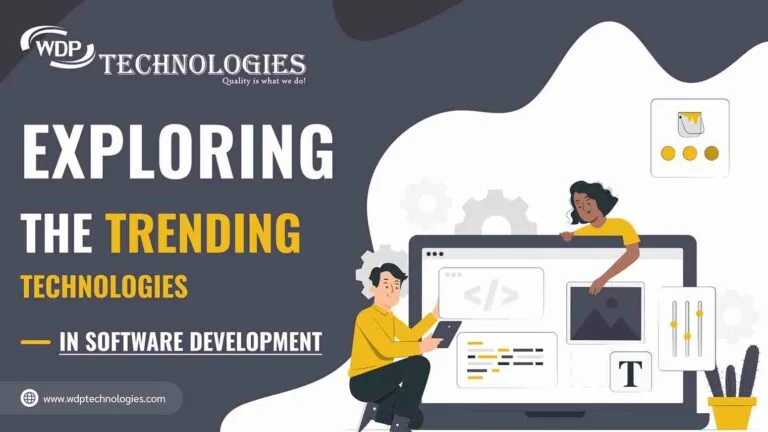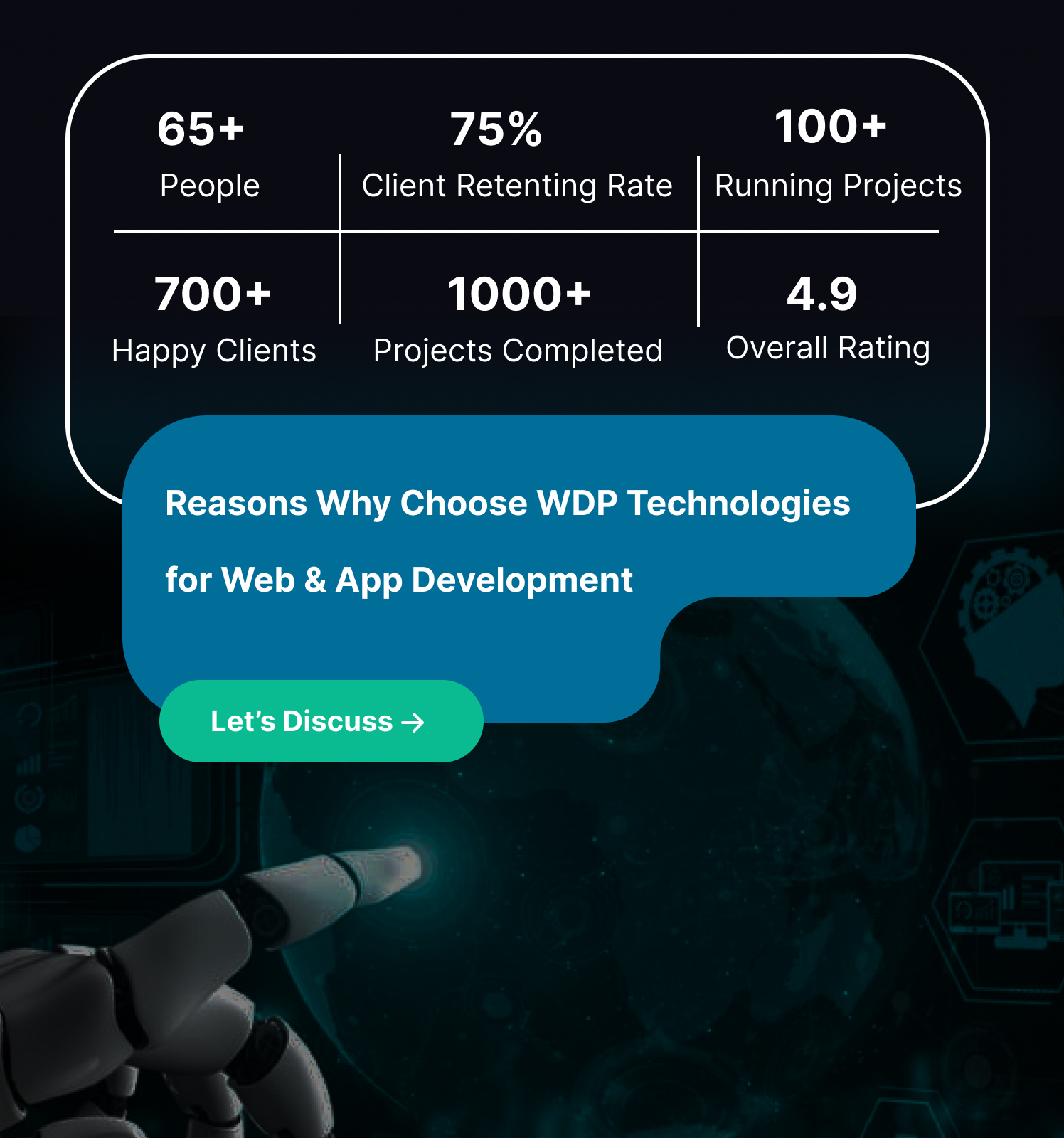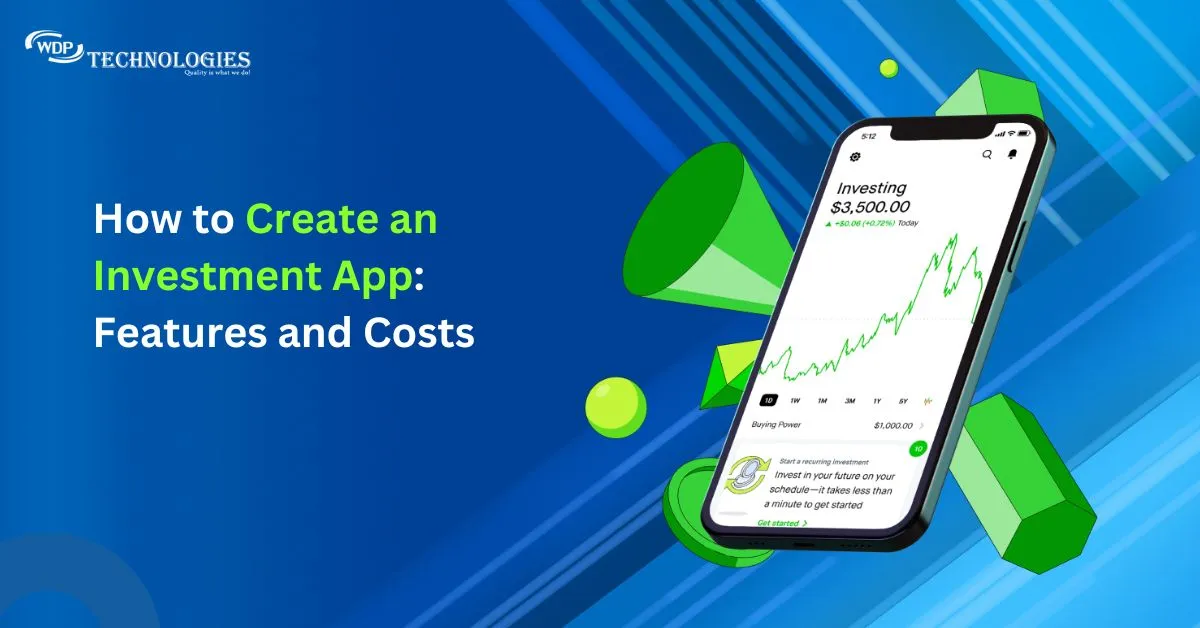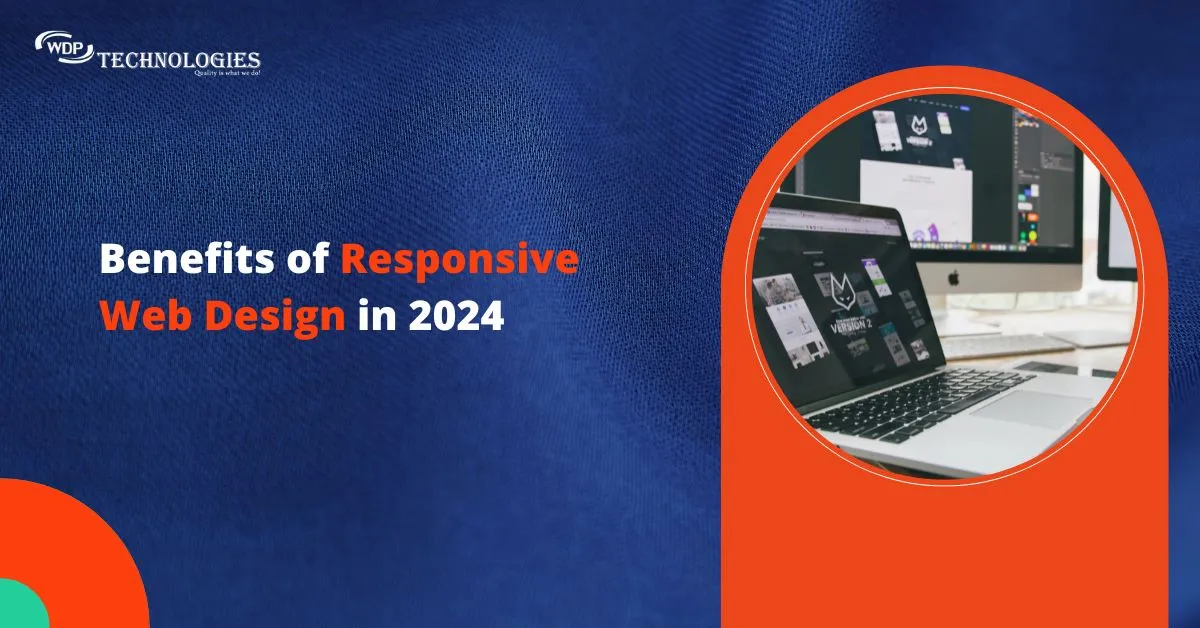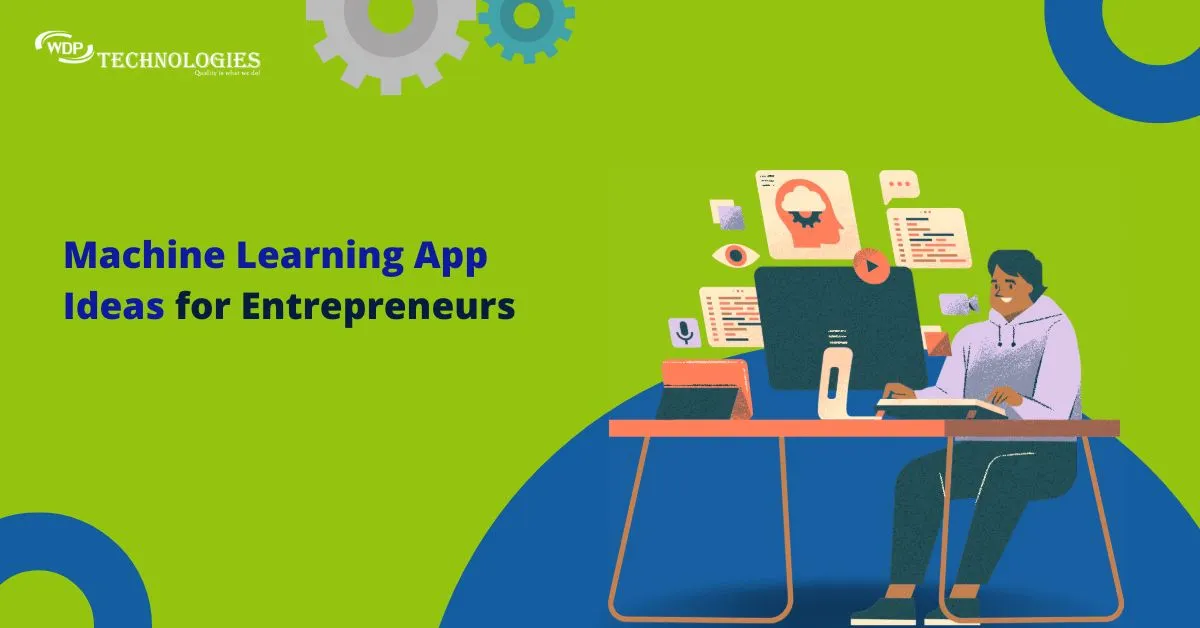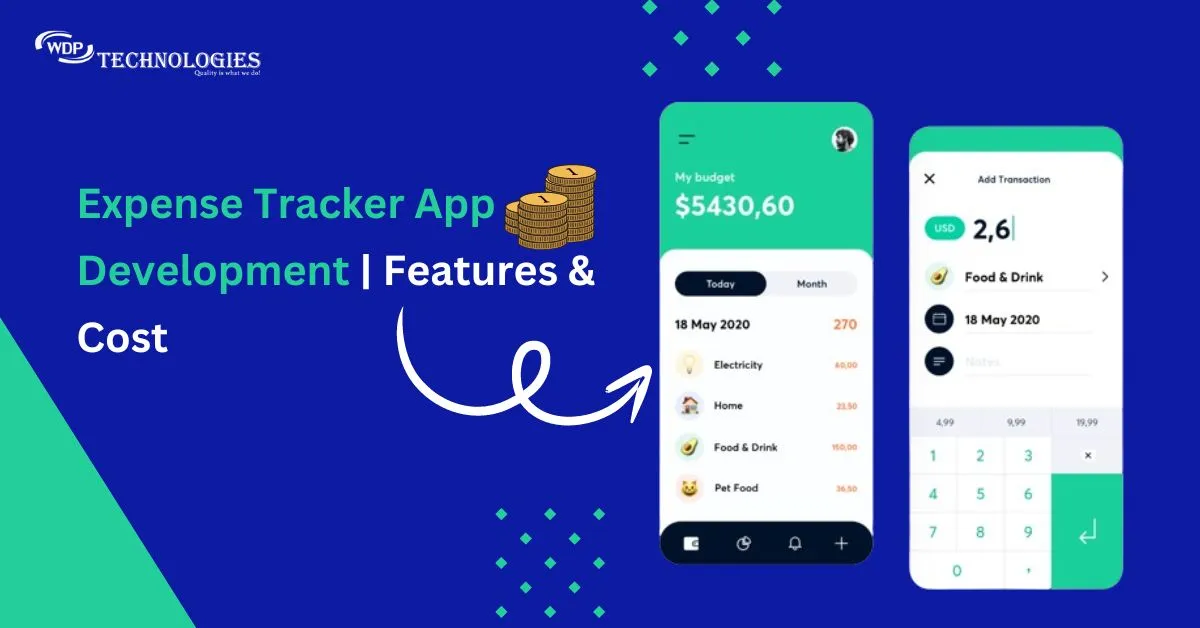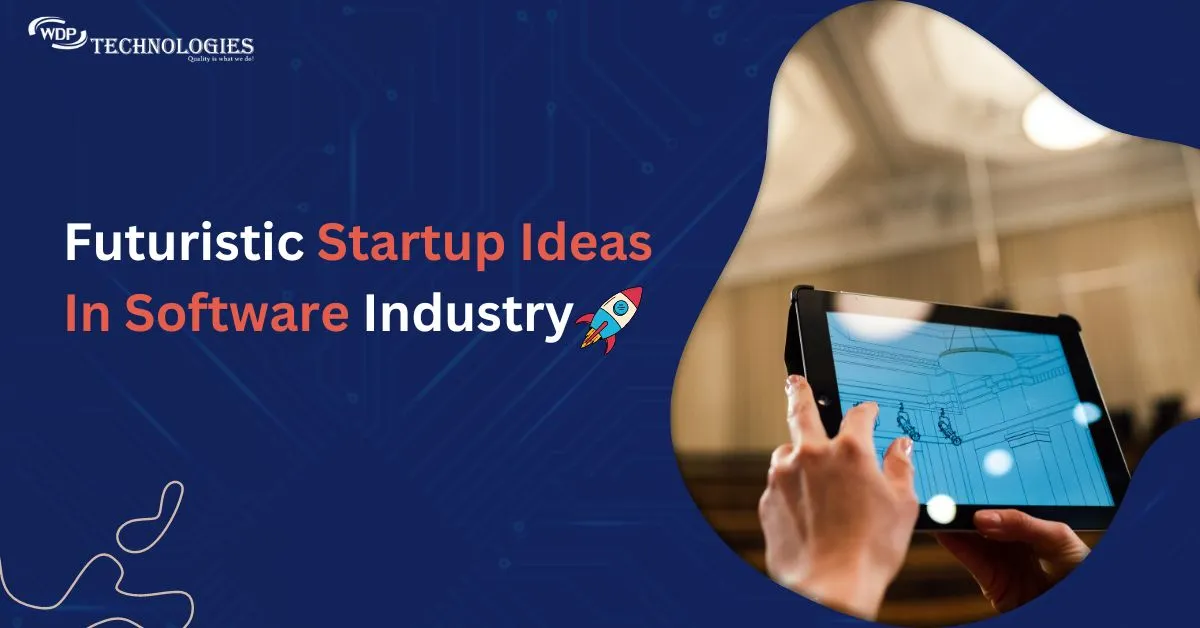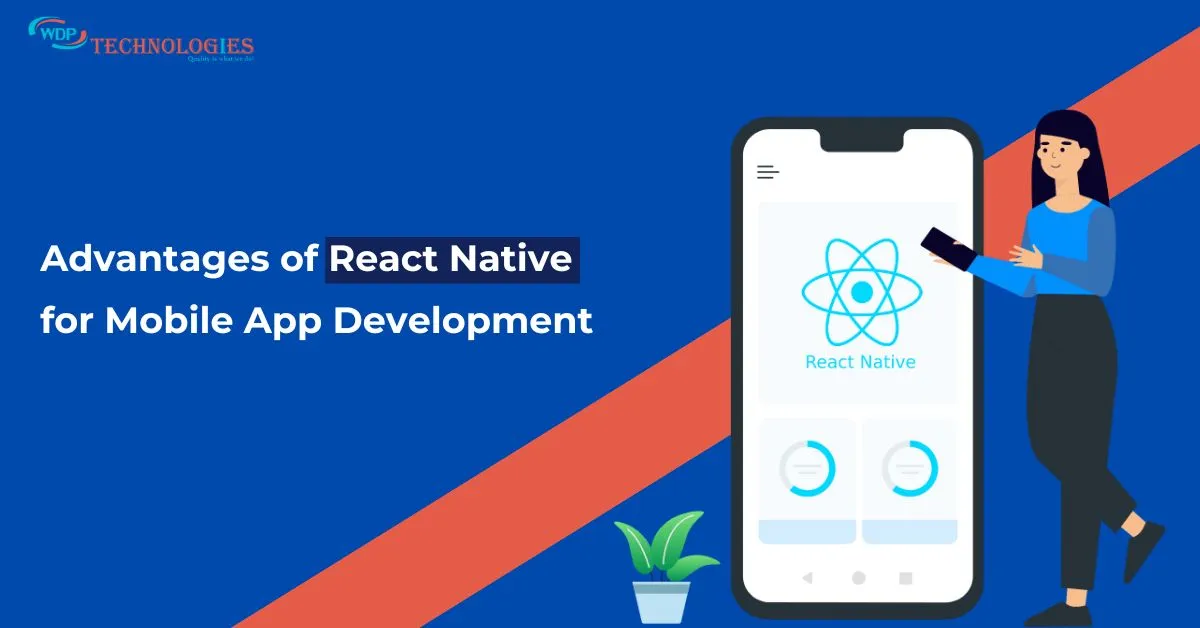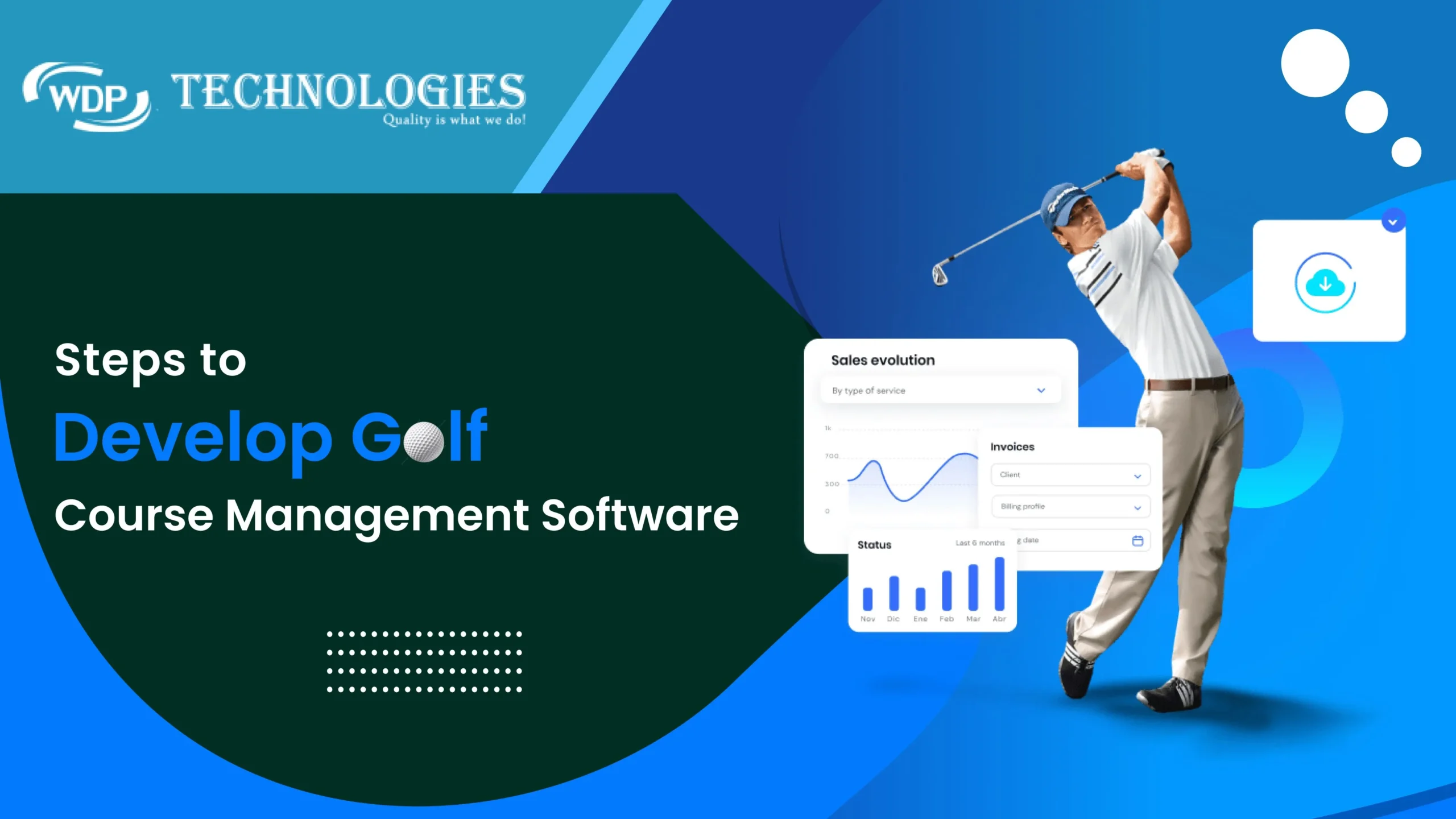As of 2023, Some studies have projected that the It world will earn annual revenue of $4.8 trillion. Software development has become an important part of every business. it helps enterprises to innovate, evolve, and grow. Especially because of the outbreak of COVID-19, organizations have understood the importance of IT experts and technological updates and it’s clear as day that whoever has the arsenal of cutting-edge software technology will come out on top in 2023’s corporate battleground. There are so many trending technologies in software development world you must let us study some of the most trending software development technologies.
Overview of Software Development
Software development is the process of designing, creating, testing, and maintaining software. It involves the use of programming languages and software development tools to turn a software idea into a working software product.
The software development process typically involves the following steps:
Requirements gathering and analysis: The first step in software development is to gather information about the requirements of the software and analyze them to determine the best approach to building the software.
Design and planning: The next step is to design the software, including its architecture, user interface, and functionality. The design should take into account the requirements and constraints of the software.
Implementation and coding: The implementation phase involves writing the code for the software. This is where the software developers write code in a programming language and use software development tools to build the software.
Testing: After the code is written, it is tested to ensure that it meets the requirements and works as expected. This may involve manual testing or automated testing, and may involve testing the software for functionality, performance, and security.
Deployment and maintenance: Once the software is tested and approved, it is deployed to the production environment and becomes available for use by customers and end-users. The software also needs to be maintained and updated over time to ensure that it continues to meet the needs of the users.
Software development is a complex and multi-disciplinary field that requires a combination of technical skills, creativity, and problem-solving abilities. It is a constantly evolving field, with new technologies and tools emerging regularly, and it is essential for developers to stay up-to-date with the trending technologies in software development field.
Benefits of Software Development
Software development offers many benefits to organizations and individuals, including:
Automation of processes: Software can automate manual tasks, freeing up employees to focus on more strategic initiatives. This can increase productivity and efficiency and reduce errors caused by manual processes.
Improved accuracy: Software can improve the accuracy of data and reduce the risk of errors, especially when automated processes are involved.
Increased competitiveness: Organizations that invest in software development can gain a competitive advantage by streamlining operations and improving the efficiency of their business processes.
Increased revenue: Organizations can increase revenue by improving their operations and reaching new customers through software-based products and services.
Improved customer experiences: Software can be used to provide better customer experiences, such as through personalized recommendations, faster and more accurate responses, and more convenient ways to interact with the company.
Better decision-making: Software can provide real-time data and analytics to help organizations make better decisions, respond quickly to changes in the market, and identify new opportunities.
Career opportunities: Software development is a growing field, with a high demand for skilled professionals. Pursuing a career in software development can offer individuals the opportunity to develop valuable skills and earn a competitive salary.
Innovation: Software development enables organizations to explore new ideas and bring innovative products and services to market, helping them to stay ahead of the competition and drive growth.
Trending Technologies in Software Development
Software development is a rapidly evolving field, with new technologies and tools emerging regularly to help organizations build better, more efficient, and more effective software. Some of the most trending technologies in software development includes:
1) Artificial Intelligence (AI) & Machine Learning (ML)
Artificial Intelligence (AI) refers to the simulation of human intelligence in machines that are designed to think and work like humans. AI has become an integral part of our lives, ranging from virtual assistants like Siri or Alexa to self-driving cars.
Machine Learning (ML) is a subset of AI that focuses on the development of algorithms and statistical models that enable computers to perform tasks without being explicitly programmed. ML is used to train computer systems to make predictions, recognize patterns and make decisions based on data inputs.
2) Cloud Computing (AWS, Azure, Google Cloud)
Cloud Computing is the delivery of computing resources—including servers, storage, databases, networking, software, analytics, and intelligence—over the Internet (“the cloud”) to offer faster innovation, flexible resources, and economies of scale.
AWS (Amazon Web Services) is a cloud computing platform and infrastructure created by Amazon. It offers a wide range of services including computing, storage, databases, and networking, among others.
Azure is Microsoft’s cloud computing platform that provides a range of services, including computing, storage, databases, and networking. It allows developers to build, deploy, and manage applications and services on a global network of Microsoft-managed data centers.
Google Cloud is a suite of cloud computing services offered by Google, including computing, storage, databases, and networking, among others. It provides a platform for building, deploying, and managing applications and services on the same infrastructure that Google uses internally for its end-user products.
3) Microservices Architecture
Microservices Architecture is a software design pattern in which an application is decomposed into a set of small, independent services that communicate with each other through APIs. Each microservice is responsible for a specific business capability and can be developed, deployed, and scaled independently.
The microservices approach offers several benefits, including improved scalability, faster time to market, and better resilience and fault tolerance, among others. It enables organizations to adopt a more agile and flexible development process and allows them to break down complex applications into smaller, manageable components that can be developed and deployed independently.
4) DevOps and Continuous
DevOps is a culture, philosophy, and set of practices that emphasizes collaboration and communication between development and operations teams in order to improve the speed and quality of software delivery. DevOps aims to automate and optimize the software development lifecycle, from development to deployment and operation.
Continuous Integration (CI) is a software development practice that requires developers to regularly integrate code changes into a single codebase, which is then built and tested automatically. This helps to catch integration bugs early and allows for a faster feedback loop for developers.
Continuous Deployment (CD) is an extension of CI that automatically deploys code changes to production environments after they have been thoroughly tested. The goal of CD is to minimize the lead time between writing code and making it available to users.
Together, CI/CD forms a key part of the DevOps culture and helps organizations to rapidly and reliably deliver software updates and improvements to their customers.
5) Integration/Continuous Deployment (CI/CD)
Continuous Integration (CI) is a software development practice that requires developers to regularly integrate code changes into a single codebase, which is then built and tested automatically. This helps to catch integration bugs early and allows for a faster feedback loop for developers.
Continuous Deployment (CD) is an extension of CI that automatically deploys code changes to production environments after they have been thoroughly tested. The goal of CD is to minimize the lead time between writing code and making it available to users.
CI/CD refers to the combination of these two practices and forms a key part of the DevOps culture. It helps organizations to rapidly and reliably deliver software updates and improvements to their customers.
CI/CD pipelines typically include several steps, such as code integration, building and testing the code, and deploying the code to production. These processes are automated, allowing for faster and more reliable software delivery, and enabling organizations to iterate and improve their products more quickly.
6) Containerization (Docker, Kubernetes)
Containerization is a method of packaging software applications and their dependencies into isolated containers that can run consistently across different environments.
Docker is a popular platform for containerization that provides a set of tools for packaging, deploying, and managing containers. It allows developers to package an application and its dependencies into a single container that can be easily moved between environments, ensuring consistency and reducing the risk of compatibility issues.
Kubernetes is an open-source platform for automating the deployment, scaling, and management of containerized applications. It provides a way to manage containers at scale, allowing organizations to run and manage their applications in a flexible and scalable manner.
Together, Docker and Kubernetes form a powerful combination for developing and deploying containerized applications, and are widely used in modern software development and deployment practices.
7) Low Code/No Code Platforms
Low Code/No Code platforms are tools that allow developers and business users to create, deploy, and manage applications without writing extensive code. These platforms provide drag-and-drop interfaces, pre-built templates, and other visual tools to help simplify the development process.
Low Code platforms are designed for professional developers and offer a visual development environment that speeds up the application development process by automating much of the coding and boilerplate work.
No Code platforms, on the other hand, are designed for business users who have little or no coding experience, and allow them to create applications by arranging and configuring pre-built components and visual blocks.
Low Code/No Code platforms are designed to help organizations quickly develop and deploy custom applications, reduce the time and cost of software development, and enable business users to participate in the application development process. They are increasingly popular in today’s digital landscape as they allow organizations to be more agile and responsive to changing business needs
Read More : Low Code vs Traditional Development
8) Blockchain Technology
Blockchain is a decentralized, distributed ledger technology that records transactions across a network of computers. It was originally developed as the underlying technology for the cryptocurrency, Bitcoin, but its use cases have since expanded to a variety of industries, including finance, supply chain management, and digital identity.
A key feature of blockchain technology is its transparency and immutability, as all participants in the network have access to the same data and once data is recorded on the blockchain, it cannot be altered or deleted. This makes blockchain a secure and trustworthy platform for conducting transactions and exchanging information.
Another important feature of blockchain development technology is its decentralized nature, which eliminates the need for intermediaries and increases security and efficiency in various use cases.
Overall, blockchain technology has the potential to revolutionize the way that organizations manage data and conduct transactions, providing a secure and efficient platform for exchanging information and assets in a decentralized manner.
9) 5G Network Technology
5G is the fifth generation of mobile network technology that promises to bring faster speeds, lower latency, and increased capacity compared to previous generations of mobile networks. 5G networks are designed to support the growing demand for high-speed mobile data services, IoT devices, and emerging technologies such as augmented and virtual reality.
Some of the key benefits of 5G technology include:
Faster speeds: 5G networks offer peak speeds that are up to 20 times faster than 4G networks, providing a seamless experience for users who require fast and reliable data services.
Lower latency: 5G networks have lower latency compared to 4G networks, reducing the delay in transmitting data, making it ideal for real-time applications such as gaming, virtual reality, and autonomous vehicles.
Increased capacity: 5G networks can support a much larger number of devices than 4G networks, making it suitable for large-scale IoT deployments.
More efficient use of spectrum: 5G networks use spectrum more efficiently, allowing for more devices to be connected at the same time and providing a more efficient use of available spectrum.
5G networks are expected to play a key role in enabling the digital transformation of various industries, enabling new applications and services that were not possible with previous generations of mobile networks.
10) Internet of Things (IoT)
The Internet of Things (IoT) refers to the network of physical devices, vehicles, home appliances, and other items embedded with electronics, software, sensors, and connectivity that enables these objects to collect and exchange data.
IoT devices are connected to the internet and can communicate with each other, allowing for the creation of smart systems and the automation of various tasks. The data generated by these devices can be analyzed to gain insights, improve decision-making, and create new business opportunities.
Examples of IoT applications include smart homes, connected cars, wearable devices, and industrial IoT systems. These systems allow for improved efficiency, automation, and new services, such as predictive maintenance, real-time tracking, and remote monitoring.
The IoT is expected to have a significant impact on various industries, as it enables the creation of new business models and services, improves efficiency, and creates new opportunities for innovation. The continued growth of IoT is dependent on advancements in related technologies such as 5G networks, edge computing, and artificial intelligence, which will provide the necessary infrastructure to support the growing number of connected devices.
11) Progressive Web Apps (PWA)
Progressive Web Apps (PWA) are web applications that use modern web technologies to provide a native-like experience on the web. PWAs are designed to work offline, provide fast and responsive performance, and provide a similar look and feel to native mobile apps.
Some key features of PWAs include:
- Offline functionality: PWAs can work offline or on low-quality networks, providing a reliable and fast experience for users.
- Fast performance: PWAs are designed to load quickly, providing a fast and responsive user experience.
- Native-like experience: PWAs provide a similar look and feel to native mobile apps, making them more engaging and user-friendly.
- Installable: PWAs can be installed on the user’s home screen, providing easy access and a native-like experience.
- Cross-platform compatibility: PWAs can run on any platform that supports modern web technologies, providing a consistent experience across multiple devices.
PWAs are a cost-effective alternative to native mobile apps and are well suited for companies looking to provide a high-quality web experience for their users. PWAs are becoming increasingly popular as they offer a fast and reliable experience for users and provide an efficient and cost-effective solution for companies looking to provide a high-quality web experience for their customers
12) Native App Development
Native app development refers to the creation of mobile applications that are built to run on a specific platform, such as iOS or Android, using the platform’s native programming languages and development tools.
Native apps are designed to take advantage of the specific features and capabilities of a particular platform, providing a fast and smooth user experience. They are also able to access the device’s hardware, such as the camera and accelerometer, enabling new and innovative use cases.
Some of the key benefits of native app development include:
- Improved performance: Native apps are optimized for the specific platform, providing fast and smooth performance for users.
- Access to platform-specific features: Native apps have access to the full range of platform-specific features, such as notifications and in-app payments.
- Better security: Native apps are built using platform-specific security frameworks, providing a higher level of security compared to other app development approaches.
- Better user experience: Native apps provide a more engaging and user-friendly experience, taking advantage of platform-specific design patterns and user interface elements.
Native app development is often the preferred approach for companies looking to provide a high-quality user experience and take advantage of the specific features and capabilities of a particular platform. However, native app development can be more expensive and time-consuming compared to other app development approaches, as it requires separate development and testing for each platform.
15) Big Data Computation
Big data computation refers to the processing and analysis of extremely large and complex datasets, typically in the range of terabytes to petabytes. Big data computation is a critical aspect of big data analytics, which involves discovering insights, patterns, and relationships in large and complex datasets.
The growing volume, velocity, and variety of data generated by businesses and individuals have led to the increasing importance of big data computation. Some of the key challenges associated with big data computation include:
- Data storage and retrieval: Storing and retrieving large datasets can be a significant challenge, requiring scalable and efficient storage systems.
- Data processing: Processing large datasets in a timely manner requires high-performance computing resources and efficient algorithms.
- Data analysis: Analyzing large datasets often requires advanced statistical and machine learning algorithms, as well as specialized tools and software.
To address these challenges, organizations are using big data platforms such as Apache Hadoop and Apache Spark, as well as cloud-based big data services such as Amazon Web Services (AWS), Microsoft Azure, and Google Cloud. These platforms and services provide scalable storage, computing resources, and tools for processing and analyzing big data, enabling organizations to make data-driven decisions and gain insights from their data.
16) Cross-platform and Hybrid Deployment
Cross-platform and hybrid deployment refers to the development of mobile applications that can run on multiple platforms, such as iOS, Android, and the web. Cross-platform and hybrid deployment provides organizations with the ability to reach a wider audience, regardless of the device or platform being used, while also reducing development and maintenance costs.
Cross-platform development typically involves using cross-platform development tools and frameworks, such as React Native, Xamarin, and Flutter, that allow developers to write code once and deploy it to multiple platforms.
Hybrid deployment, on the other hand, involves developing a hybrid application that is a combination of a native app and a web app, running in a native app container. The native app container provides access to device-specific features, while the web app provides cross-platform compatibility.
Some of the benefits of cross-platform and hybrid deployment include:
- Reaching a wider audience: Cross-platform and hybrid deployment enables organizations to reach a wider audience, regardless of the device or platform being used.
- Cost savings: Cross-platform and hybrid deployment reduces development and maintenance costs, as code can be reused across multiple platforms.
- Faster time to market: Cross-platform and hybrid deployment enables organizations to launch their applications faster, as development and testing can be done simultaneously for multiple platforms.
- Improved user experience: Cross-platform and hybrid deployment provides a consistent user experience across multiple platforms, improving the overall user experience.
Cross-platform and hybrid deployment is becoming increasingly popular as organizations seek to reach a wider audience and reduce development and maintenance costs while also providing a high-quality user experience.
These technologies are transforming the way organizations build and deploy software, enabling them to improve speed, efficiency, and scalability while also providing better user experiences and increased security. By staying up-to-date on these trending technologies, organizations can continue to innovate and stay ahead of the competition in the ever-changing landscape of software development.
5 Software Development Trends to Watch in 2023
Here are five software development trends to watch in 2023:
- Low-Code/No-Code Platforms: The use of low-code and no-code platforms will continue to grow as organizations seek to simplify the software development process and make it accessible to a wider range of users. These platforms will enable organizations to quickly create and deploy custom applications without the need for extensive coding.
- Artificial Intelligence and Machine Learning: The use of AI and ML in software development will continue to increase as organizations seek to gain insights from large datasets and automate complex tasks. These technologies will be used to create more intelligent and intuitive applications that can learn from user behavior and improve over time.
- Edge Computing: Edge computing will become increasingly important as organizations seek to process and analyze data closer to the source, reducing latency and improving performance. This trend will be driven by the growth of IoT devices and the increasing demand for real-time data processing.
- Cross-Platform Development: The demand for cross-platform applications that can run on multiple devices and operating systems will continue to grow. This will require software developers to have a good understanding of multiple platforms and technologies, as well as the ability to write code that is compatible with multiple environments.
- DevOps: DevOps will continue to play a critical role in software development as organizations seek to automate and streamline the development and deployment process. This will involve the use of automation tools and the integration of development and operations teams to improve collaboration and reduce the time to market for new applications and updates.
How to Choose the Right Software Technology
Here are some steps to help you choose the right technology for your project:
- Define your project goals and requirements: Start by clearly defining the goals and requirements of your project. This will help you to determine what features and functionality you need, and what technology is best suited to meet those needs.
- Assess your current technology stack: Take a close look at the technology stack you already have in place. If you have existing systems and technologies, it may make sense to build on what you already have, rather than starting from scratch.
- Research and evaluate your options: Research the technologies that are available and evaluate them against your project goals and requirements. Look for technologies that have a proven track record, good documentation, and a large and active community of developers.
- Consider the skills of your team: Choose a technology that your team is familiar with or that can be easily learned. The more experience your team has with a technology, the more quickly and efficiently they will be able to develop and maintain your project.
- Consider scalability and future needs: Consider the scalability of the technology you choose. Make sure that it is capable of meeting your current and future needs, and can grow with your organization.
- Evaluate the cost: Consider the cost of the technology, including any licensing fees, support costs, and any other associated expenses. Make sure that the technology you choose fits within your budget.
- Test and pilot the technology: Before making a final decision, test and pilot the technology to see how well it performs in a real-world environment. This will help you to identify any potential issues and make an informed decision.
- Seek advice from experts: Consult with experts in the field, such as software developers, technology consultants, and industry analysts, to get their perspective on which technology is best suited to your project.
Also Read: Technologies To Build Microservices Architecture
Conclusion
The field of software development is rapidly evolving, with new technologies and tools emerging regularly to help organizations build better, more efficient, and more effective software. The new trending technologies in software development are driving innovation and improving the speed, efficiency, and scalability of software development while also providing better user experiences and increased security.
From Artificial Intelligence (AI) and Machine Learning (ML) to Cross-platform and Hybrid Deployment, these technologies are helping organizations stay ahead of the competition and meet the growing demands of their customers and users.
As technology continues to advance, it is essential for organizations to stay informed about the latest trends and trending technologies in software development to ensure they remain competitive and continue to innovate. By embracing these technologies, organizations can drive growth, improve operations, and deliver value to their customers.

